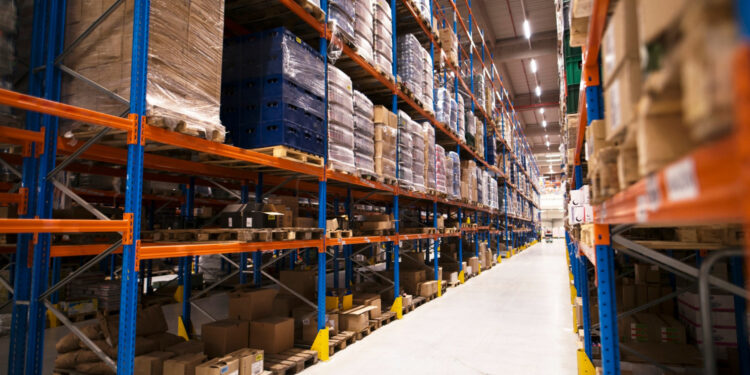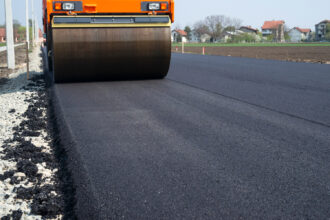Selective vs. Drive-In: Choosing the Right Pallet Rack for Your Needs


If you’re planning a warehouse setup or considering a revamp, one of the most important decisions you’ll make is how to store your inventory. And in the world of pallet racking, two of the most common options are selective and drive-in pallet racks.
Each system has its strengths, and choosing the right one isn’t just about price or popularity; it comes down to how your warehouse operates, what you’re storing, and how fast items need to move.
Table of Contents
What’s the Real Difference?
Before diving into when to use which, let’s get clear on what these systems actually are.
Selective Pallet Racks
These are what most people picture when they think of a pallet rack. Upright frames and horizontal beams create easy-access shelves where forklifts can reach any pallet without moving others.
In a nutshell? One pallet deep, multiple levels high. Total accessibility.
Drive-In Pallet Racks
This setup is more about density. Instead of aisles between every row, forklifts drive directly into the rack structure to store or retrieve pallets. It’s designed for high-volume, low-SKU storage.
In short? Pallets are stored several deep. First in, last out.
When Selective Racking Makes Sense
Selective pallet racking is all about flexibility and access. If your operation handles a variety of products that move quickly and need frequent rotation, this is usually the better pick.
Here’s why it might be a fit:
- High SKU Variety – You stock lots of different products, and need to reach any of them at any time.
- Frequent Picking – Items are regularly picked, not just stored long-term.
- First-In, First-Out (FIFO) Friendly – You want to move older stock before newer stock.
- Ease of Operation – Less training needed for forklift drivers. No navigating inside rack tunnels.
Because selective racking allows access to every pallet, it’s ideal when your warehouse needs to stay nimble. Think seasonal inventory, fast-moving goods, or operations with unpredictable order patterns.
When Drive-In Racking Works Better
Now, if you’re storing a lot of the same item, and not moving it every day, drive-in racking might save you serious space.
Here’s when it works well:
- Low SKU Count – You’re storing large quantities of a few types of products.
- High Storage Density Needed – You need to store more pallets in less space.
- Last-In, First-Out (LIFO) Is Acceptable – You don’t need strict FIFO rotation.
- Products Stay Put for a While – You’re not pulling pallets constantly.
Drive-in systems eliminate the need for aisles between every row, which means you can fit more pallets into the same footprint. But that comes at the cost of access; only the front pallet in a row is immediately reachable.
Pros and Cons
Let’s look at the real trade-offs between these systems.
Selective Rack
Pros:
- Easy access to every pallet
- Flexible layout and expansion
- Ideal for FIFO inventory
- Quick to load and unload
Cons:
- Lower storage density
- Takes up more floor space
- More aisles = less usable cube
Drive-In Rack
Pros:
- High-density storage
- Fewer aisles needed
- Great for bulk storage of identical items
Cons:
- Limited pallet access
- Requires skilled forklift operation
- Not suited for FIFO
Other Things to Think About
Beyond the basics, there are a few extra considerations that could swing your decision one way or the other.
Space Utilization
If you’re tight on square footage, drive-in racking might allow you to store significantly more pallets. But remember: more storage isn’t always better if it slows down your workflow.
Safety and Maintenance
Selective racks are generally easier to inspect and maintain, simply because everything’s out in the open. Drive-in systems can be more prone to forklift damage due to the need to drive inside the structure.
Forklift Type and Training
Selective systems don’t demand much specialized forklift handling. Drive-in racking does. Your team needs to be trained to navigate tight spaces without damaging racks (or product).
Turnover Rate
If your inventory turns over quickly, you’ll likely benefit from the efficiency of selective racking. If your goods sit in storage for longer periods before moving, drive-in could be the more space-efficient choice.
You Can Also Mix and Match
Here’s something that often gets overlooked: you don’t have to choose just one. Many warehouses use a hybrid approach: selective racks for fast-moving or high-value SKUs and drive-in racks for bulk storage. That way, you get the best of both systems without forcing a one-size-fits-all setup onto a complex operation.
So, Which One Should You Go With?
There’s no universal answer. But you can ask yourself a few key questions to steer the decision:
Do you need to access every pallet at any time?
→ Go with selective.
Are you storing large quantities of the same item with infrequent access?
→ Drive-in is likely better.
Is space a bigger constraint than time?
→ Consider drive-in.
Do you need quick, flexible order picking?
→ Selective will save time.
Think about what matters more to your operation: accessibility or density. That’s really what this choice comes down to.
Storage Should Serve Your Flow
Your pallet racking system should support the way your warehouse works, not slow it down. It’s not just about fitting more in. It’s about making sure your space is working smarter, not harder.
Whether you go with selective, drive-in, or a mix of both, the right choice is the one that fits how your team moves, stores, and ships products every day.






